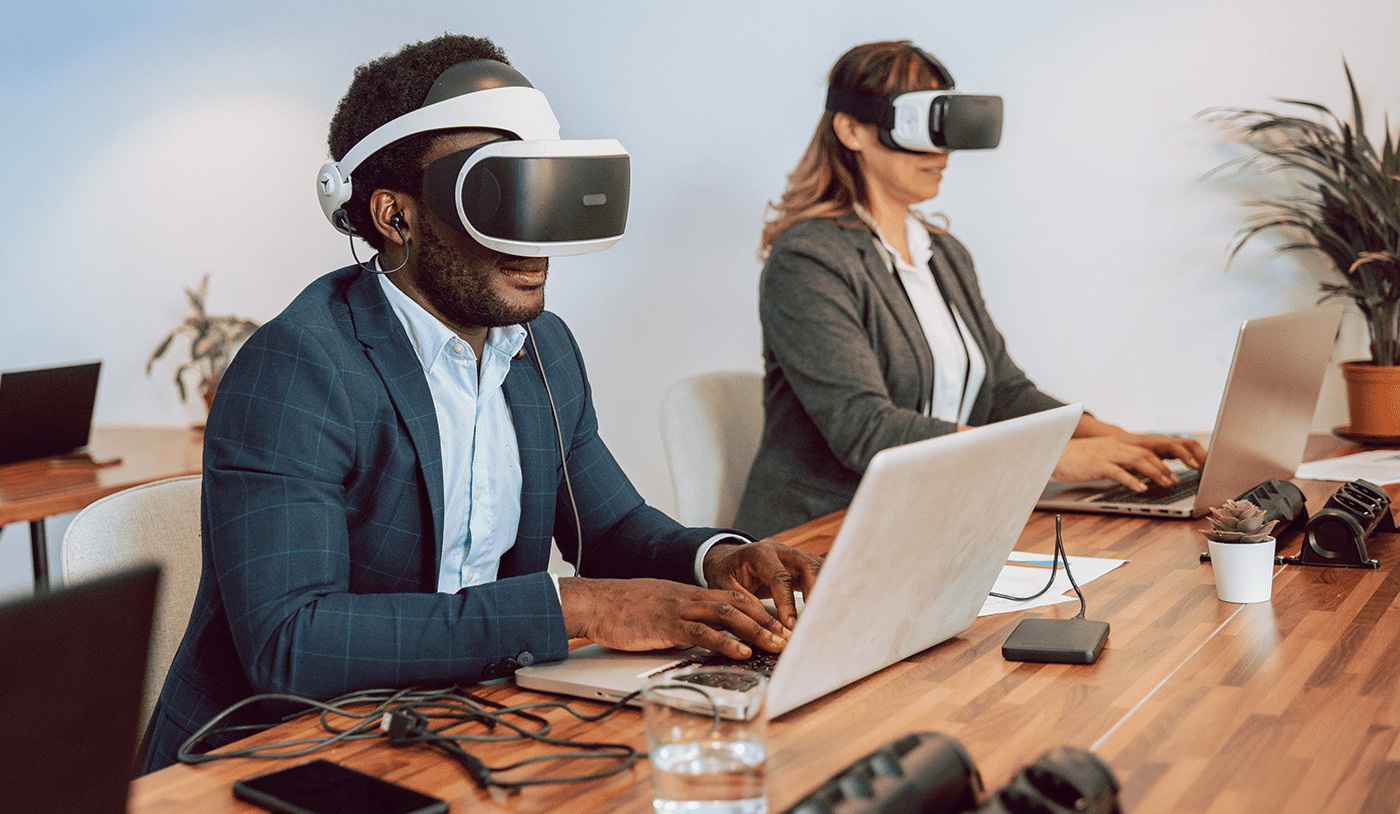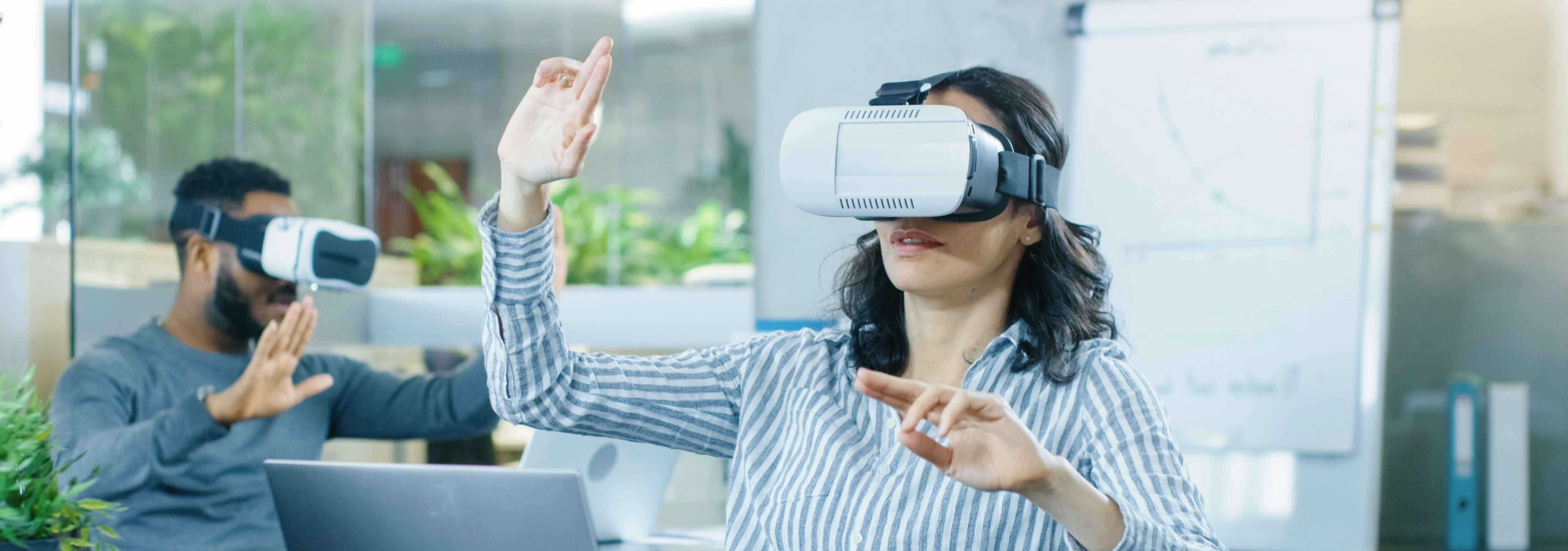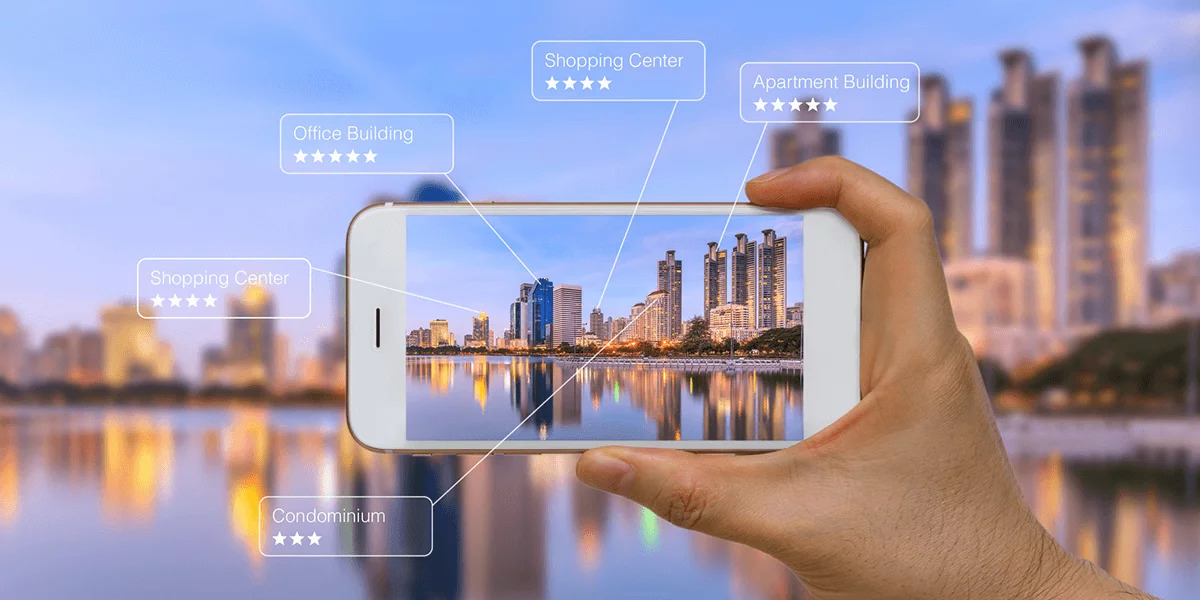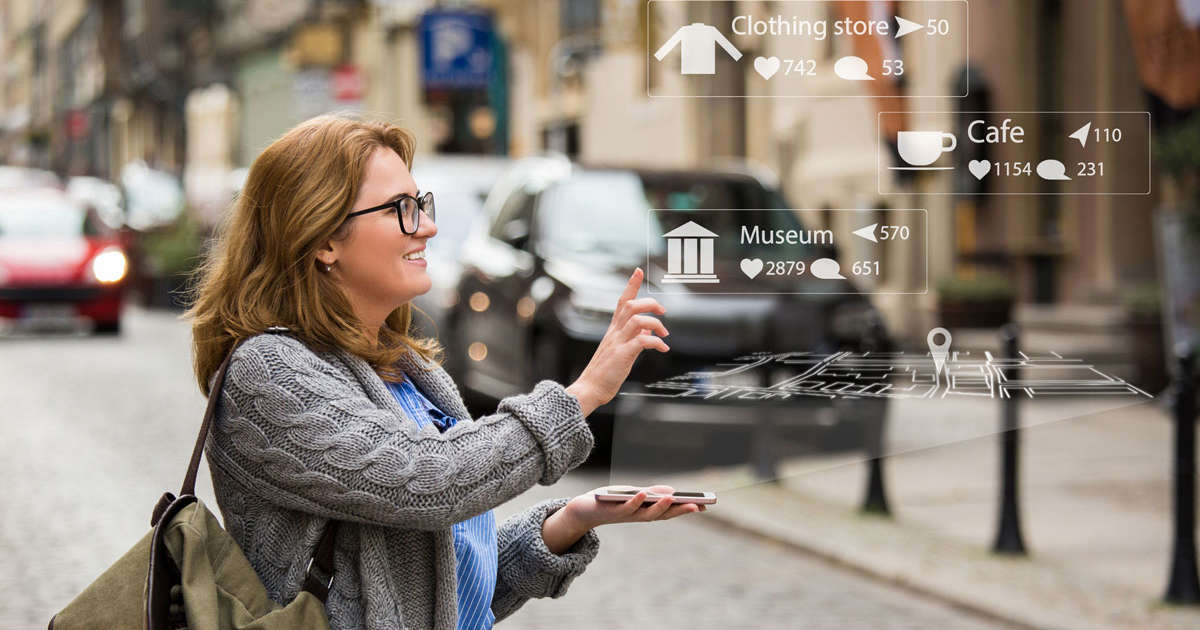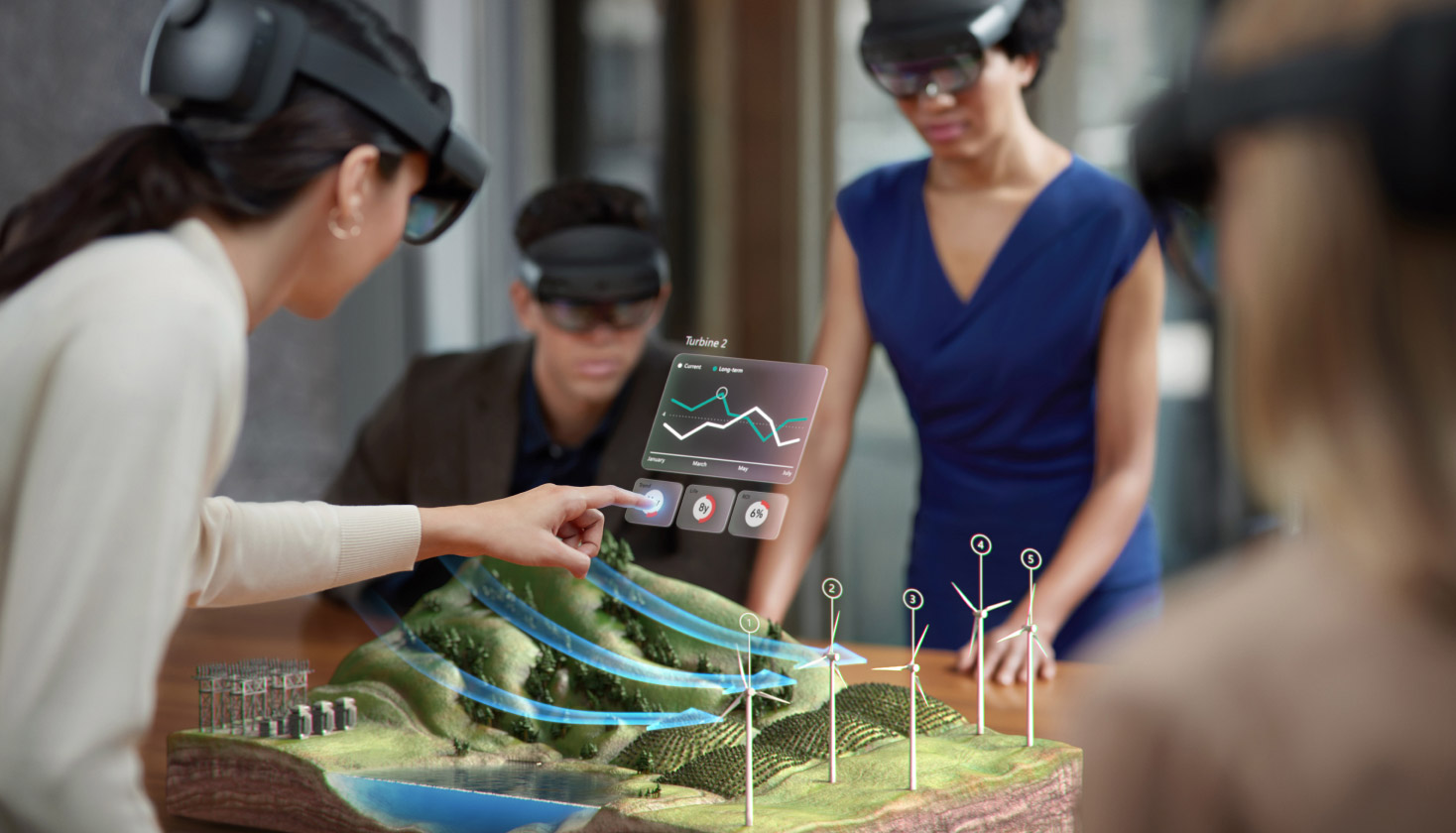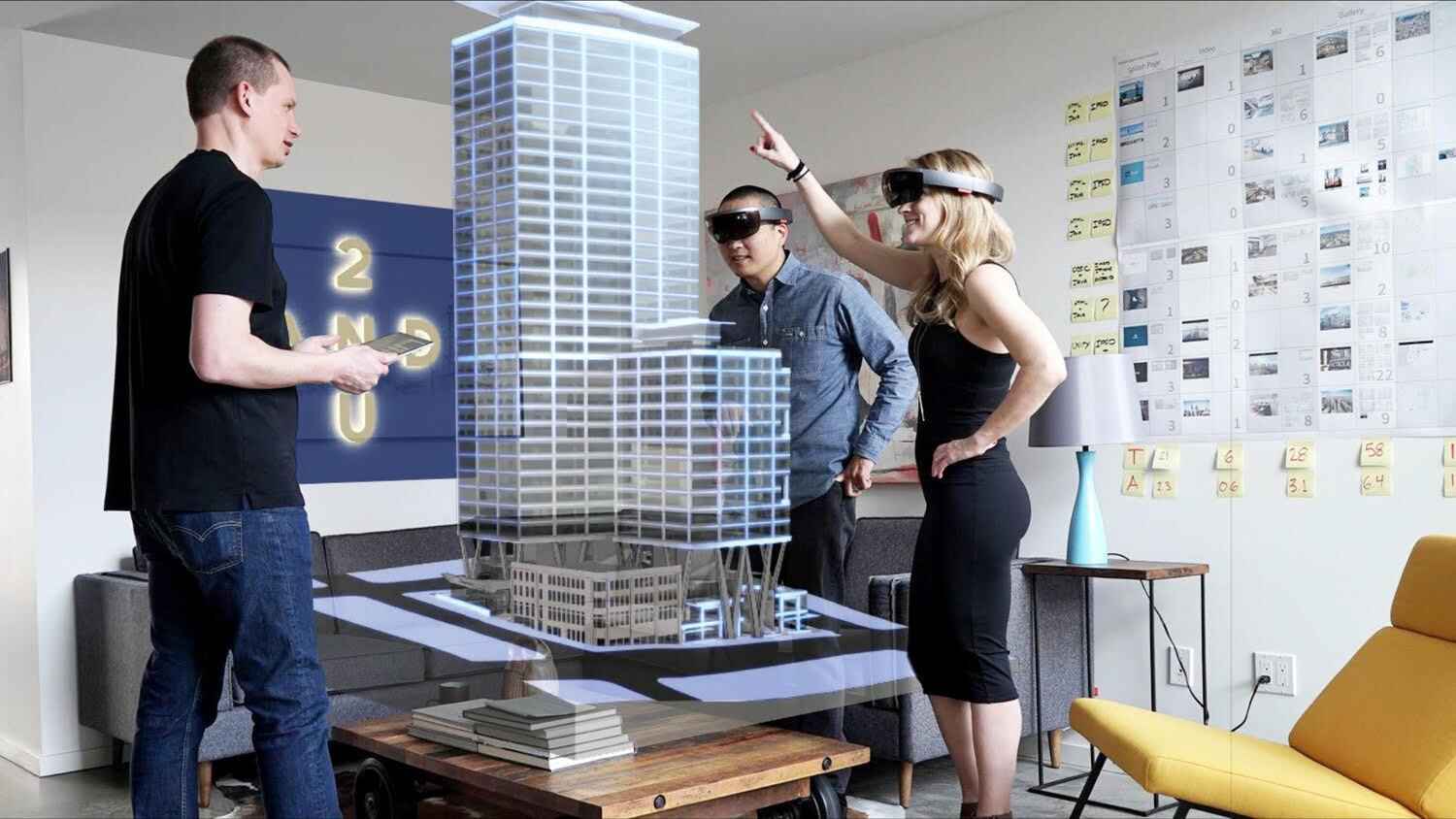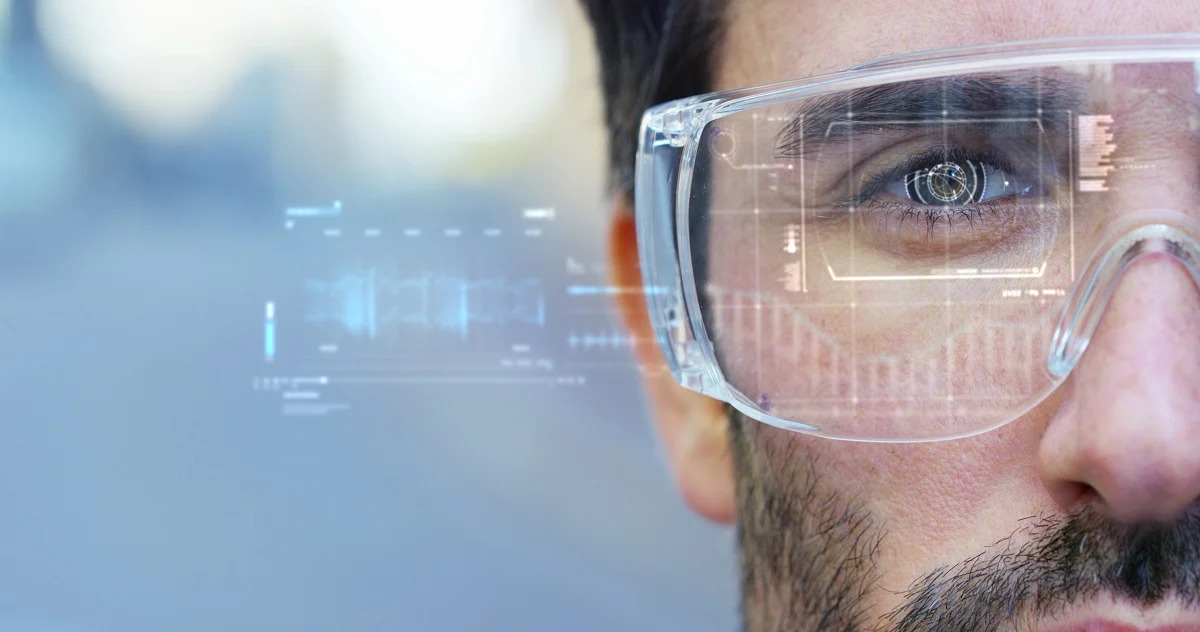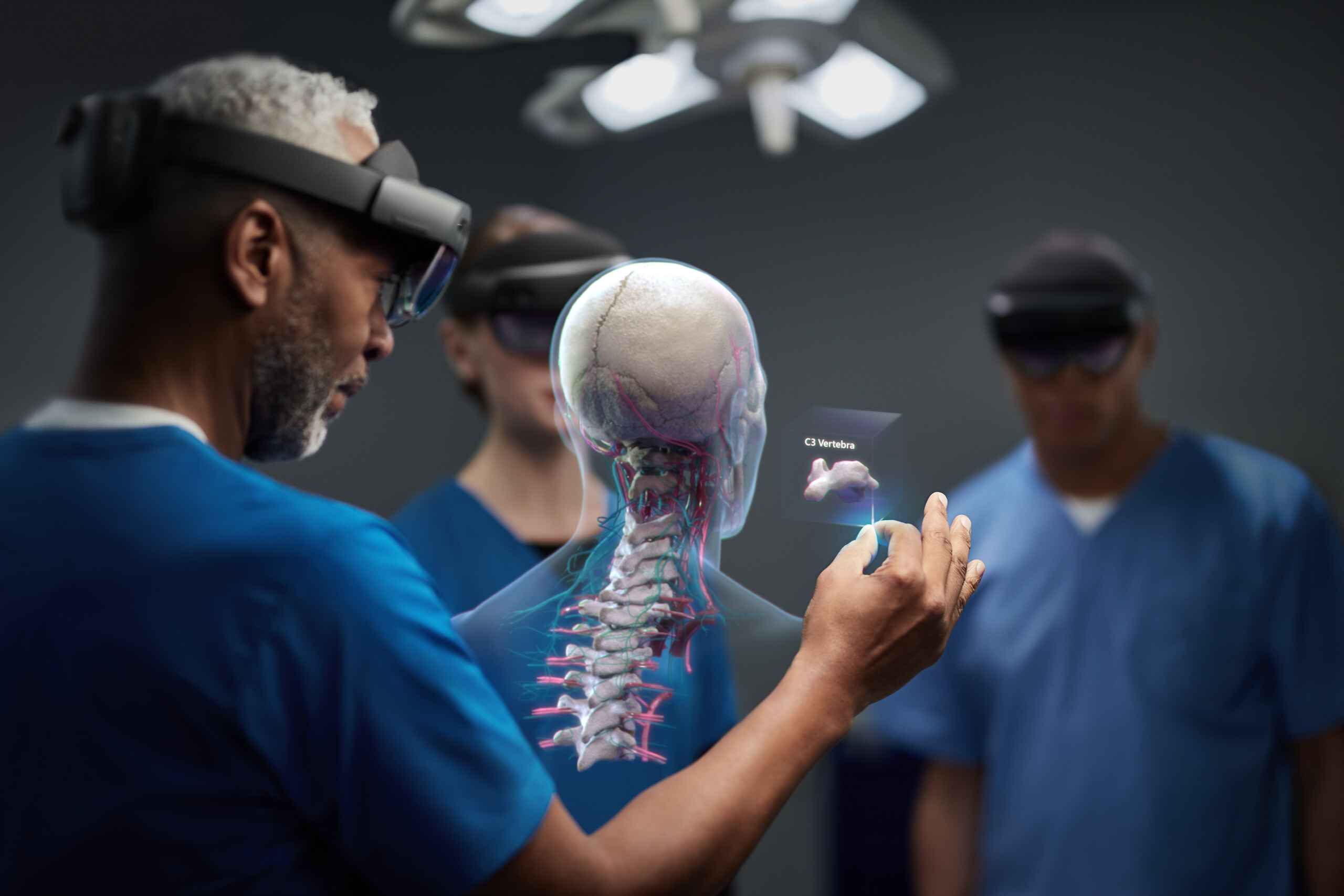Introduction
Virtual Reality (VR) and Augmented Reality (AR) are rapidly transforming various aspects of our lives, and the workplace is no exception. These immersive technologies have revolutionized the way we work, collaborate, and learn. By combining digital information and the real world, VR and AR provide unprecedented opportunities for businesses to enhance productivity, efficiency, and engagement.
Virtual Reality creates a computer-generated simulation that immerses users in a fully digital environment, allowing them to interact with virtual objects and surroundings. Augmented Reality, on the other hand, overlays digital content onto the real world, making it accessible and interactive.
With the growing accessibility and affordability of VR and AR devices, organizations across industries are harnessing these technologies to streamline processes, train employees, design products, and connect with customers. By leveraging the power of VR and AR, companies can achieve a competitive edge, improve decision-making, and deliver enhanced experiences to their stakeholders.
In this article, we will explore the impact of VR and AR on the workplace, including the advantages, applications, challenges, and future possibilities. By understanding the potential of these transformative technologies, businesses can make informed decisions about their adoption and integration strategies.
Virtual Reality in the Workplace
Virtual Reality (VR) is revolutionizing the workplace by providing immersive and interactive experiences that were previously unimaginable. From employee training and collaboration to product design and customer engagement, VR is being harnessed across various industries.
One of the key applications of VR in the workplace is training and simulation. By creating realistic and immersive environments, VR enables employees to gain hands-on experience in a safe and controlled setting. For example, in industries such as healthcare and manufacturing, VR can be used to simulate complex procedures, allowing trainees to practice and refine their skills without any real-world consequences.
VR also enhances remote collaboration by bringing geographically dispersed teams together in a virtual space. With VR headsets, users can interact and collaborate as if they were in the same room, enabling effective communication and problem-solving. This technology is particularly valuable for global companies with teams spread across different locations.
Furthermore, VR has unlocked new possibilities in product design and prototyping. By creating virtual models and environments, designers can visualize and test their ideas before investing in physical prototypes. This not only reduces costs but also accelerates the design iteration process, enabling companies to bring products to market faster.
Virtual Reality is also making a significant impact on customer engagement. By offering immersive and personalized experiences, companies can deepen their connections with customers and create memorable interactions. For instance, in the travel and tourism industry, VR allows potential customers to virtually explore destinations and experiences, helping them make informed decisions and fostering excitement.
Overall, the integration of Virtual Reality in the workplace opens up a world of opportunities for businesses to improve training, collaboration, design processes, and customer engagement. As VR technologies continue to advance, we can expect even more innovative applications in various industries.
Advantages of Using Virtual Reality in the Workplace
Virtual Reality (VR) offers numerous advantages when integrated into the workplace, transforming the way businesses operate and interact. Let’s explore some of the key benefits of using VR in professional settings:
Enhanced Learning and Training: VR provides a highly immersive and interactive learning environment, allowing employees to gain practical experience and hands-on training. Whether it’s simulating hazardous situations, complex procedures, or customer interactions, VR offers a safe and controlled space for employees to practice and refine their skills.
Cost-effective Solution: Adopting VR for training and simulations can significantly reduce costs associated with traditional training methods, such as physical mock-ups or real-time supervision. With VR, companies can create virtual scenarios and equipment without the need for physical resources, thus saving time and resources.
Improved Collaboration and Communication: Virtual Reality enables teams to collaborate effectively, regardless of geographical constraints. Virtual meeting spaces allow employees to interact as if they were physically present, fostering collaboration and idea sharing. This technology is particularly valuable for global organizations where teams are spread across different locations.
Increased Productivity and Efficiency: By providing employees with virtual workspaces and tools, VR empowers them to be more productive and efficient. Virtual environments can be customized to suit specific tasks and workflows, optimizing processes and minimizing distractions. Additionally, VR can automate repetitive tasks, freeing up employees’ time for more complex and critical activities.
Accelerated Design and Prototyping: VR enables designers to visualize and test their ideas in a virtual environment. With intuitive tools and realistic simulations, design iterations can be performed quickly, saving time and resources. This accelerated design process can lead to faster product development, innovation, and improved time-to-market.
Enhanced Customer Engagement and Marketing: VR creates immersive experiences for customers, allowing them to interact with products or services before making a purchase. This fosters deeper engagement and helps customers make informed decisions. VR can also be utilized for virtual showrooms, virtual tours, and product demonstrations, enhancing marketing efforts and driving customer satisfaction.
Competitive Advantage: By embracing VR technology, businesses can gain a competitive edge in the market. The ability to provide cutting-edge training, streamline processes, and offer unique experiences can differentiate organizations from their competitors and attract both customers and talented professionals.
Overall, Virtual Reality offers significant advantages in the workplace, enabling companies to improve learning and training, reduce costs, enhance collaboration, boost productivity, accelerate design processes, engage customers, and gain a competitive advantage.
Applications of Virtual Reality in Various Industries
Virtual Reality (VR) has found a multitude of applications across various industries, transforming the way businesses operate and deliver value to their stakeholders. Let’s explore some of the key industries where VR is making a significant impact:
Healthcare: VR is revolutionizing healthcare by providing immersive training simulations for medical professionals. Surgeons can practice complex procedures in a realistic virtual environment, enhancing their skills and improving patient outcomes. VR is also used for pain management, mental health therapy, and patient education, enabling more effective treatments and care.
Real Estate and Architecture: In the real estate industry, VR offers virtual property tours, allowing potential buyers to explore properties remotely and visualize space layouts. Architects and designers can create virtual mock-ups, offering clients a realistic view of their future projects before construction begins. This helps in better decision-making, reducing costs, and improving customer satisfaction.
Education and Training: VR has tremendous potential in education, providing immersive learning experiences for students. From virtual field trips to historical simulations, VR enhances engagement and understanding. It also facilitates practical training in fields such as aviation, engineering, and emergency services, enabling hands-on learning in a safe and controlled environment.
Manufacturing and Engineering: VR is transforming the manufacturing and engineering sectors by allowing designers and engineers to visualize and test products virtually. This accelerates the design iteration process, reduces costs, and improves product quality. VR is also used for training assembly line workers, ensuring consistency and efficiency in operations.
Automotive and Aerospace: VR is used in the automotive and aerospace industries for product design, prototyping, and assembly line optimization. Engineers can explore vehicle interiors and exteriors virtually, test engineering designs, and simulate assembly processes. This leads to greater efficiencies, improved safety, and enhanced user experiences.
Retail and E-commerce: VR is revolutionizing the retail experience by providing virtual shopping environments. Customers can browse and interact with virtual products, try on virtual clothing, and make informed purchase decisions. This immersive retail experience enhances customer engagement and reduces the need for physical stores, opening up new possibilities for e-commerce.
Gaming and Entertainment: The gaming and entertainment industry has been at the forefront of VR adoption. VR gaming offers players immersive experiences, transporting them into virtual worlds. In addition to gaming, VR is being utilized in the film industry to create interactive and immersive movie experiences.
Tourism and Hospitality: VR is reshaping the tourism and hospitality industry by providing virtual destination tours and hotel experiences. Potential tourists can explore attractions, resorts, and accommodations virtually, assisting them in making travel decisions. VR also supports training in the hospitality sector by simulating scenarios and enhancing customer service skills.
These are just a few examples of the diverse applications of VR across industries. As technology continues to advance, we can expect even more innovative applications and widespread adoption in the coming years.
Potential Challenges and Risks of Virtual Reality in the Workplace
While Virtual Reality (VR) offers numerous advantages in the workplace, there are also potential challenges and risks that organizations need to consider. It’s important to be aware of these factors to ensure the successful integration and utilization of VR technology:
Cost: VR devices and software can be expensive, especially for businesses on a tight budget. The initial investment in hardware, software development, and support infrastructure may pose financial challenges for some organizations. Additionally, ongoing costs related to equipment maintenance and software updates should be considered.
Technical Limitations: VR technology is rapidly evolving, but there are still technical challenges that need to be addressed. Issues such as motion sickness, visual fatigue, and limited field of view can affect user comfort and immersion. Hardware and software compatibility, as well as interoperability, can also pose obstacles when integrating VR systems into existing workflows.
Data Privacy and Security: As with any technology that collects and processes data, VR raises concerns about data privacy and security. VR applications may gather personal or sensitive information about users, and it’s crucial for organizations to implement robust security protocols to protect this data from unauthorized access or breaches.
Training and Skill Development: While VR can enhance training and skills development, there is a learning curve associated with using VR technology effectively. Employees may require time and resources to familiarize themselves with the hardware, software, and user interfaces. Adequate training and support programs should be in place to ensure employees can maximize the benefits of VR in their roles.
Social Isolation and Collaboration: VR can create immersive experiences, but it also has the potential to isolate users from the physical workspace and real-world interactions. In some cases, VR experiences may limit face-to-face collaboration and hinder non-verbal communication, which is essential for building relationships and fostering teamwork. Balancing immersive experiences with social interaction is crucial for a healthy work environment.
Ethical Considerations: VR experiences can be incredibly realistic, blurring the line between virtual and real-world environments. This raises ethical concerns, particularly in industries where VR simulations may involve sensitive or emotionally challenging scenarios. Organizations must ensure they have guidelines and protocols in place to address ethical considerations and safeguard employee well-being.
User Acceptance and Adaptation: Not all employees may readily embrace VR technology in the workplace. Some individuals may have reservations, fear, or discomfort when using VR devices. It’s important for organizations to provide proper training, education, and support to help employees overcome these barriers and encourage adoption.
By understanding and addressing these challenges and risks, organizations can mitigate potential pitfalls and maximize the benefits of Virtual Reality in the workplace.
Augmented Reality in the Workplace
Augmented Reality (AR) is revolutionizing the workplace by overlaying digital information onto the real world, enhancing employees’ perception and interaction with their surroundings. Unlike Virtual Reality (VR), which creates a fully immersive digital environment, AR seamlessly integrates digital elements into the physical environment.
AR technology leverages wearable devices such as smart glasses or mobile devices with AR capabilities, enabling users to access information, instructions, and visualizations in real-time while working. This technology offers a wealth of opportunities in various industries and job functions.
One of the key applications of AR in the workplace is in industrial settings. By providing real-time guidance and overlays on machinery or equipment, AR enhances productivity and reduces errors. Maintenance technicians can use AR overlays to access manuals, identify parts, or follow step-by-step instructions during repair or assembly processes. This reduces downtime and enhances efficiency.
AR is also transforming the field of remote collaboration. With AR, experts in different locations can virtually ‘be present’ and provide guidance in real-time, remotely collaborating with on-site teams. This is particularly valuable in industries such as field service, where technicians can receive instant support and instruction from experts without the need for physical presence.
Another application of AR is in training and onboarding processes. By overlaying digital elements onto physical objects, AR can provide interactive and engaging training experiences. New employees can learn complex tasks through visual instructions and interactive guidance, accelerating their learning curve and reducing the need for extensive training programs.
Retail is another industry that benefits significantly from AR. AR can enable virtual try-on experiences, allowing customers to visualize products such as clothing, accessories, or furniture in their own space. This enhances the shopping experience, increases customer satisfaction, and reduces return rates. In stores, AR can also provide additional product information, personalized recommendations, or interactive displays.
AR technology is also being harnessed in the field of design and architecture. Architects and designers can use AR to visualize and present designs to clients in a more interactive and immersive manner. By overlaying digital models onto physical spaces, clients can experience the design in real-time, providing valuable feedback and facilitating better decision-making.
Overall, Augmented Reality offers numerous opportunities to revolutionize the workplace, improving productivity, collaboration, training, customer experiences, and design processes. As the technology continues to advance, we can expect even more innovative applications of AR across industries.
Benefits of Incorporating Augmented Reality in the Workplace
Augmented Reality (AR) is transforming the workplace by enhancing employees’ perception and interaction with the physical environment. By overlaying digital information onto the real world, AR offers several benefits that improve productivity, efficiency, and collaboration. Let’s explore some of the key advantages of incorporating AR in the workplace:
Enhanced Productivity: AR provides real-time access to information, instructions, and visual cues, eliminating the need for employees to refer to separate manuals or documents. With AR overlays, workers can have hands-free access to relevant data, improving efficiency and reducing errors. This seamless integration allows employees to focus on tasks and streamline workflows, enhancing overall productivity.
Improved Training and Onboarding: AR offers interactive and immersive training experiences, making it ideal for onboarding new employees or training existing ones. By overlaying digital elements onto physical objects, AR provides step-by-step instructions, interactive guidance, and simulations. This hands-on learning approach accelerates the learning curve, reduces the risk of errors, and increases employee confidence.
Real-Time Collaboration: Augmented Reality enables remote collaboration by overlaying digital elements onto the real world, allowing teams in different locations to work collaboratively. With live video feeds and AR overlays, experts can guide on-site employees during complex tasks, reducing response times and improving decision-making. This seamless collaboration enhances teamwork and allows organizations to leverage the expertise of their global workforce.
Improved Safety and Risk Mitigation: AR technology assists in improving workplace safety by providing real-time visual cues and warnings. For example, AR overlays can highlight potential hazards or provide safety instructions during maintenance or manufacturing processes. These interactive visual cues mitigate risks, prevent accidents, and enhance employee well-being.
Enhanced Customer Experiences: AR can transform customer experiences by providing interactive and personalized interactions. In retail, customers can virtually try on products using AR overlays, visualizing how products would look in real-time. This immersive experience leads to increased customer engagement, reduced return rates, and improved customer satisfaction. AR can also be used to provide virtual guides or interactive displays in tourist attractions or museums, enhancing visitor experiences.
Efficient Design and Prototyping: AR technology revolutionizes the design and prototyping processes by allowing designers and architects to visualize digital models within the physical environment. By overlaying digital designs onto physical spaces, stakeholders can assess the feasibility and impact of designs in real-time. This accelerates the design iteration process, reduces costs, and improves the accuracy of final products.
Cost Savings: Incorporating AR technology can lead to cost savings in various aspects of the workplace. By providing real-time guidance and reducing errors, AR helps minimize production downtime and associated costs. It also reduces the need for physical training materials or manuals and simplifies the onboarding process, saving both time and resources.
By incorporating Augmented Reality technology, organizations can unlock a multitude of benefits, including enhanced productivity, improved training, real-time collaboration, enhanced customer experiences, efficient design processes, cost savings, and improved workplace safety.
Real-World Examples of Augmented Reality Integration in Industries
Augmented Reality (AR) has been successfully integrated into various industries, transforming the way businesses operate, collaborate, and engage with customers. Let’s explore some real-world examples of AR integration in different sectors:
Healthcare: AR has found applications in healthcare, enhancing medical procedures and patient care. Surgeons can use AR overlays during surgeries to visualize key anatomical structures or view real-time patient data without looking away from the operating field. AR can also assist in locating veins for intravenous procedures or aid in medical training simulations.
Maintenance and Field Services: AR is being utilized in various industries, such as manufacturing, energy, and telecommunications, to streamline maintenance and field service operations. Field technicians can use AR headsets to access real-time instructions or manuals while working on equipment. AR overlays can highlight specific parts to repair or provide step-by-step guidance, minimizing errors and reducing the need for physical documentation.
Architecture and Construction: AR is revolutionizing the architecture and construction industries by offering interactive and immersive experiences. Architects can superimpose digital building models onto physical environments, allowing clients to visualize and explore designs in real-time. Contractors can use AR overlays to ensure accurate placement of building components or verify installation processes, leading to improved efficiency and reduced rework.
Retail and E-commerce: AR is transforming the retail experience by providing virtual try-on experiences, allowing customers to visualize how products would look in real-time. For example, retailers have incorporated AR technology into mobile apps, allowing users to virtually try on clothing, accessories, or even furniture within their own environment. This technology enhances the shopping experience, assists decision-making, and reduces the need for returns.
Manufacturing and Assembly: AR has been successfully integrated into manufacturing and assembly processes, improving efficiency and reducing errors. By providing real-time visual instructions and feedback, AR overlays assist workers in assembling complex products accurately. AR can also provide digital overlays to guide quality control inspections and ensure that products meet specified standards, reducing inspection time and improving accuracy.
Tourism and Hospitality: The tourism and hospitality industry benefits from AR by providing interactive and informative experiences for travelers. Tourists can use AR-enabled mobile apps to receive real-time information and historical context about tourist attractions or landmarks. AR overlays can also enhance hotel experiences by providing interactive menus or virtual concierge services, increasing customer satisfaction and personalization.
Training and Education: AR is revolutionizing training and education by providing immersive learning experiences. For example, in aviation training, pilots can use AR headsets to practice simulated flight operations, allowing for realistic training scenarios without the need for actual aircraft. In education, AR overlays can provide interactive visualizations, helping students better understand complex concepts or historical events.
These are just a few examples of the successful integration of Augmented Reality in various industries. As AR technology continues to advance, we can expect even more innovative applications that transform the way we work, collaborate, and engage with the world around us.
Limitations and Concerns of Augmented Reality in the Workplace
While Augmented Reality (AR) offers numerous benefits in the workplace, there are limitations and concerns that organizations need to consider to ensure successful implementation. Understanding these factors is crucial for addressing challenges and mitigating risks associated with AR technology:
Hardware Limitations: AR devices, such as smart glasses or headsets, can have limitations in terms of comfort, battery life, and field of view. Bulky or uncomfortable devices may negatively impact user experience and hinder adoption. Moreover, the limited battery life of AR devices may constrain their usage in prolonged work tasks, requiring frequent recharging or replacement.
Integration Complexity: Integrating AR into existing organizational workflows and systems can be complex. Organizations need to ensure compatibility between AR devices, software, and existing infrastructure. Integration may require additional training, support, and investment in IT resources to ensure a smooth transition and effective use of AR technology.
Data Privacy and Security: AR applications often require accessing and processing sensitive data, raising concerns about data privacy and security. Organizations must implement robust security measures to protect confidential information and ensure compliance with data privacy regulations. This includes securing AR devices themselves, securing data storage and transmission, and implementing access controls to prevent unauthorized usage or data breaches.
User Acceptance and Adaptation: The successful adoption of AR in the workplace depends on user acceptance and adaptation. Some employees may face challenges in adjusting to new AR devices, interfaces, or workflows. Resistance to change and lack of familiarity may hinder the successful integration of AR technology. Providing comprehensive training, support, and a gradual transition plan can help employees adapt and embrace AR in their work processes.
Technical Reliability and Support: AR technology relies on stable network connectivity, software updates, and technical support. Disruptions or technical issues can impact the usability of AR devices and hinder productivity. Organizations must have robust technical support mechanisms in place to address any potential technical problems, ensuring uninterrupted usage and efficient troubleshooting.
Health and Safety Concerns: Extended use of AR devices can lead to physical discomfort or strain, including eye fatigue, headaches, or musculoskeletal issues. Employers need to be aware of these health concerns and provide proper ergonomic guidelines and breaks to mitigate the risk of repetitive strain injuries or other health-related issues associated with AR device usage.
Ethical Considerations: AR technology raises ethical concerns, including privacy infringement and misuse of information. For instance, the ability to gather real-time data and provide users with overlays may overlap with privacy boundaries if not properly controlled or regulated. Organizations need to establish ethical guidelines and policies, ensuring that AR usage respects employee privacy rights and other ethical considerations.
By addressing these limitations and concerns, organizations can navigate the challenges associated with integrating AR technology into the workplace effectively. Adhering to best practices and considering the impact on employees, data privacy, and infrastructure will contribute to the successful integration and adoption of AR technology.
The Future of Virtual Reality and Augmented Reality in the Workplace
The future of Virtual Reality (VR) and Augmented Reality (AR) in the workplace is poised for further advancements and innovations, unlocking exciting possibilities for businesses. As technology continues to evolve, we can expect the following developments in the integration of VR and AR:
Improved Hardware: Both VR and AR technologies are rapidly advancing, and we can anticipate more lightweight, comfortable, and affordable devices hitting the market. Advancements in display technology, battery life, and processing power will enhance the user experience and drive greater adoption of VR and AR in the workplace.
Enhanced Mobility: The future of VR and AR will see increased mobility, with advancements in wireless connectivity and portability. This will enable employees to seamlessly use VR and AR devices while on the move, whether in a manufacturing facility, a construction site, or in remote areas for field-service tasks.
Intelligent Object Recognition: AR will leverage advancements in computer vision and machine learning to provide more intelligent object recognition. This will enable devices to recognize and interpret real-world objects more accurately, allowing for more sophisticated overlay information and real-time guidance.
Integration with Internet of Things (IoT): VR and AR will increasingly integrate with IoT technologies, enabling devices to connect and interact with the surrounding physical environment. This integration will unlock new opportunities for data exchange, real-time monitoring, and seamless integration with smart devices, further enhancing productivity and efficiency.
Social Collaboration: VR and AR technologies will advance social collaboration, enabling geographically dispersed teams to interact and collaborate in shared virtual spaces. This will bridge the gap between physical and virtual environments, facilitating seamless communication and collaboration, and fostering teamwork and innovation across organizations.
Augmented Human Capabilities: The future of VR and AR will involve augmentation of human capabilities in the workplace. For instance, AR overlays can provide real-time language translation, information retrieval, or expert assistance, empowering employees with enhanced knowledge and skills beyond their natural abilities.
Integration with Artificial Intelligence (AI): The convergence of VR, AR, and AI will result in more intelligent and personalized experiences. AI algorithms can analyze user behavior, preferences, and contextual data to provide customized AR overlays and VR simulations tailored to individual needs, further optimizing training, problem-solving, and decision-making processes.
Expanded Industry Applications: VR and AR will continue to find applications in a wide range of industries beyond their current use cases. From remote telemedicine and immersive virtual meetings to AR-powered remote maintenance and geospatial mapping, these technologies will disrupt and enhance various sectors, driving innovation and transforming workflows.
The future of VR and AR in the workplace holds immense potential for organizations to improve productivity, collaboration, and customer experiences. As technology advances and further integration occurs, VR and AR will become essential tools for organizations seeking a competitive edge and more effective ways of working and engaging with stakeholders.
Conclusion
Virtual Reality (VR) and Augmented Reality (AR) are revolutionizing the workplace, offering unprecedented opportunities for businesses to enhance productivity, collaboration, training, customer engagement, and innovation. By seamlessly blending digital elements with the real world, VR and AR technologies are transforming various industries and redefining how we work and interact in professional settings.
The advantages of VR in the workplace include immersive training simulations, remote collaboration, enhanced product design, and engaging customer experiences. By leveraging VR, organizations can improve learning outcomes, reduce costs, enhance productivity, and gain a competitive edge in the market.
Similarly, AR integration brings benefits such as real-time information access, improved collaboration, enhanced training experiences, and personalized customer interactions. By overlaying digital information onto the physical environment, AR enhances productivity, efficiency, and customer satisfaction across multiple industries.
However, the adoption of VR and AR in the workplace also comes with considerations and challenges. Organizations need to address cost factors, technical limitations, data privacy, user acceptance, and health and safety concerns associated with VR and AR usage. By proactively addressing these challenges, organizations can ensure successful implementation of VR and AR technologies.
The future of VR and AR in the workplace is promising. Advancements in hardware, improved mobility, intelligent object recognition, integration with IoT and AI, social collaboration, and expanded industry applications will further enhance the capabilities of VR and AR technologies. As these technologies continue to evolve, businesses can expect greater productivity, innovation, and value creation in their operations.
In conclusion, the integration of VR and AR in the workplace is reshaping how we work, learn, collaborate, and engage with customers. By embracing these transformative technologies strategically and addressing associated challenges, organizations can unlock the full potential of VR and AR, leading to a more productive, connected, and progressive future for the workplace.







